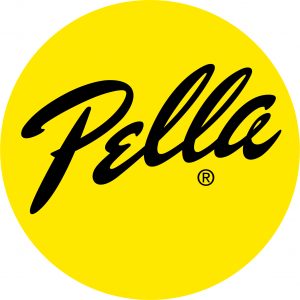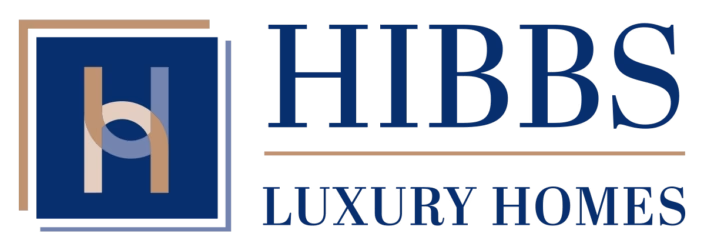Builders Dedicated to Healthier Home Construction
What makes a home healthy and why does it matter? Since the early 2000's, sustainability has pushed the fundamental way we build and live in our homes. LEED certification, passive homes, EnergySTAR, and the list goes on - with a variety of different approaches to building a sustainable home, though, many homeowners aren't sure what they should focus on.
In season five episode two, we talked to one of the country's leading green home building experts and an architecture professor about the different approaches, projects, and benefits of building green. Join your hosts, Kim Hibbs and Melody Meiners, as they take you through the world of healthy homes with guests Matt Belcher from Verdatek Solutions and Ryan Abendroth, professor from Washington University Sam Fox School of Architecture.
Your Episode Tool Box:

Topics Covered in Today's Episode
- Passive House: a standard for energy efficient home building that focuses on the exterior thermal envelope.
- Active House: a high-performance home building certification and approach that focuses on the environment, efficiency, as well as the comfort and health of the homeowners.
- LEED Certification: Leadership in energy efficiency and design, this worldwide green building certification was developed by the U.S. Green Building Council.
- Hibbs Healthy Homes: This is a sustainable building standard in homes built by Hibbs Homes that focuses on durability, energy efficiency, healthier indoor air, and comfort.
- Guests: Matt Belcher of Verdatek Solutions and Ryan Abendroth of the Sam Fox School of Design & Visual Arts.
Season Five, Episode Two | Transcript
What makes a home healthy? In this episode of The Art of Custom, hosts Kim Hibbs and Melody Meiners talk with two experts advancing the science and philosophy of better building: Ryan Abendroth, a professor of architecture at Washington University in St. Louis, and Henrik Norlander, one of the architects behind the global Active House standard and a longtime leader with VELUX.
Together, they explore how better design, air sealing, ventilation, and daylighting can dramatically improve both home performance and human well-being.
Building Science Meets Design
Ryan Smith shares how his early involvement in the Solar Decathlon competition inspired his career in high-performance architecture. Competing against universities worldwide, his team built a solar-powered home that placed second overall and first among U.S. teams. That experience introduced him to Passive House design: homes so energy-efficient that mechanical systems are nearly secondary to performance.
Since then, Ryan has focused on integrating building science and architectural design, showing students how thoughtful orientation, natural ventilation, and envelope performance come together to create sustainable, comfortable homes.
The Passive House Approach
Passive House design centers on a simple philosophy: start with the envelope, not the equipment. Instead of designing a home first and then choosing a mechanical system to handle its inefficiencies, builders begin with airtight, super-insulated walls, high-performance windows, and carefully sealed assemblies.
This process minimizes heating and cooling loads so that even small systems can maintain ideal indoor temperatures. Every Passive House includes balanced ventilation, typically through Energy Recovery Ventilators (ERVs) that filter fresh air and exhaust stale air while conserving heat and humidity.
The result: cleaner indoor air, fewer drafts, and lower utility bills without sacrificing comfort or aesthetics.
Designing for Comfort, Not Complexity
High-performance doesn’t mean futuristic. Ryan emphasizes that any architectural style can be built to Passive House or EnergySTAR standards. What changes isn’t the look of the home but what’s inside the walls.
Thoughtful design considers how light enters each space, how windows promote natural airflow, and how materials store or reflect heat. These small decisions make homes feel better, function better, and perform efficiently for decades.
The Active House Movement
Henrik Norlander, architect and former VELUX executive, brings a European perspective on health-focused design through the Active House standard: an international movement that expands on the principles of Passive House by prioritizing indoor comfort, daylight, and smart home automation.
While Passive House focuses on energy conservation, Active House ensures homes have balanced light, temperature, and ventilation to maintain human-centered environments.
Henrik helped oversee the first Active House in North America, built by Hibbs Homes in Webster Groves, Missouri. The project combined advanced daylighting strategies, skylights, and smart ventilation to create a model of livability and efficiency.
Smart Homes, Simplified
Henrik notes that early smart home systems were too complex and expensive for most homeowners. But technology has evolved toward simplicity — systems that are plug-and-play, intuitive, and compatible across devices.
VELUX and its partners developed skylights and window systems that automatically respond to indoor temperature and CO₂ levels. These innovations make it easy for homeowners to live comfortably without constant adjustment or technical expertise.
The key lesson? Smart technology should empower, not overwhelm.
Cost, Codes & Consumer Demand
Both guests agree: the future of healthier, high-performance homes will be driven as much by consumer awareness as by building codes. While minimum energy codes are improving, most innovation comes from clients who value comfort, quality, and long-term savings.
Ryan stresses that building a forever home justifies investing in better insulation, windows, and ventilation, which are costs that typically pay back within a decade through lower energy bills. Meanwhile, Henrik reminds listeners that the energy you don’t use is the most affordable of all.
Comfort Through Light & Air
Daylight plays a critical role in health and energy savings. Henrik explains how VELUX skylights and window systems balance daylight, ventilation, and insulation to enhance mood and productivity while reducing reliance on artificial lighting.
His philosophy is that homes should adapt naturally to the seasons, allowing light and fresh air to flow when possible and sealing up efficiently when not. This active approach creates living spaces that feel as good as they perform.
A Global Shift Toward Better Building
From Denmark to the U.S., high-performance design is gaining traction as energy costs rise and environmental awareness grows. Large investors and homebuyers alike now see sustainability as value, not luxury.
Henrik predicts that future advancements will focus on smart energy grids, home-to-grid connections, and simplified building systems that communicate seamlessly, much like a universal USB standard for homes.
Healthier homes aren’t about futuristic architecture or unaffordable tech, they’re about intentional design, balanced ventilation, and human comfort. As both experts emphasize, good design and good building practices go hand in hand.
Special Thanks to Our Sponsors...



 LISTEN NOW ON APPLE PODCASTS
LISTEN NOW ON APPLE PODCASTS